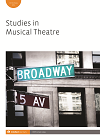
Full text loading...

In the history of opera, singing has repeatedly been associated with states of crisis – a term and concept traced back by historian Reinhart Koselleck from its origins to expanded meanings in the modern age. By adopting his findings on the medical and economic use of crisis, a delayed discourse surfaces regarding singers and singing. Concepts of crisis as choosing between alternatives, such as trust in vocal technique or medical treatment, flexibility or specialization in repertoire, have been established and maintained. However, the most recent developments make it necessary to consider the uncertainties instead of alternatives, as well as the shifting organizational and networking aspects of the opera industry, with artist managers and agents in special, triadic relations of varying order with the opera companies and the singers. Especially with the economic pressures on the opera companies increasing, the singers’ agencies are in a key position of securing engagements and career developments.

Article metrics loading...

Full text loading...
References


Data & Media loading...

Publication Date:
https://doi.org/10.1386/smt_00033_1 Published content will be available immediately after check-out or when it is released in case of a pre-order. Please make sure to be logged in to see all available purchase options.